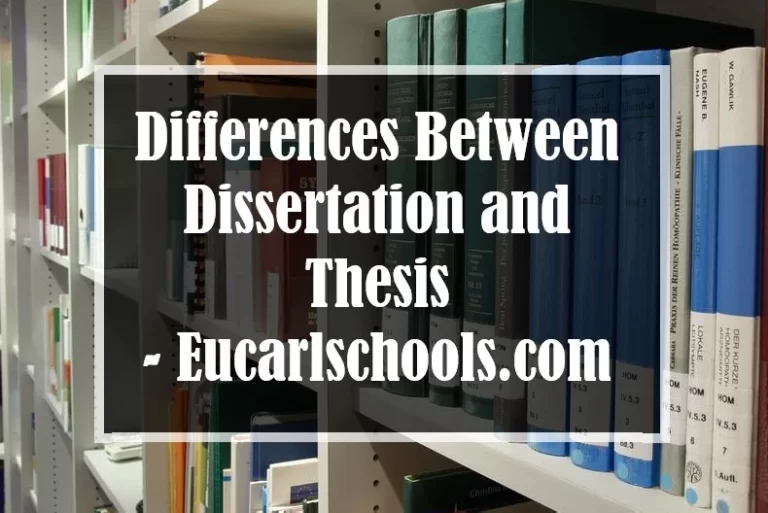What are the Differences Between Physiotherapy and Physical Therapy?
The debate on the differences between physiotherapy and physical therapy might come off as strange both to those in the medical field and those who aren’t, mainly since they have been used interchangeably, even though they aren’t synonymous.
We can at least agree that there are many similarities between physiotherapy and physical therapy, which could outnumber the differences. Notwithstanding, these few differences between physiotherapy and physical therapy are worth mentioning; hence, this article will outline them and how important they can be for those who require the services of either of them.
What we wouldn’t do is jump right into the differences between physiotherapy and physical therapy; instead, we would first give an overview of both terms, physiotherapy and physical therapy, next.
What is physiotherapy?
In summary, physiotherapy uses physical measures to restore a patient’s health. Some of these physical measures could include: massages, exercise regimen, ultrasound therapy, and even heat in some instances to treat the deformity or illness of the patient without the patient needing to go under the knife.
Those who are trained in this health profession are known as physiotherapists. They are popularly known at times to either provide health education to the patients or prescribe exercises that aid the recovery of patients without the patients going to the operating table. For physiotherapists to do all these successfully, having extensive knowledge of the patient’s lifestyle is not negotiable.
What is physical therapy?
Unlike physiotherapy, physical therapy is more concerned with the improvement of the patient’s degree of movement or lessening of pain, especially after the patient has undergone a surgical operation. The medical professionals licensed and trained to conduct physical therapy are known as physical therapists.
They are experts at recognizing and diagnosing physical abnormalities using proven clinical measures and procedures aimed at relieving the patient of any discomfort or pain and, in some other cases, improving mobility in the patient.

The Major Differences between Physiotherapy and Physical therapy
Can we begin to outline the differences between physiotherapy and physical therapy without discussing the approach employed by both professionals? Even though both physiotherapy and physical therapy have the same goal, physiotherapy involves the use of oral or manual therapies to restore the health of patients. Physical therapy is more in tune with practical-based treatments.
Among the differences between physiotherapy and physical therapy is that physiotherapists take care of post-surgical or urgent health scenarios. In contrast, physical therapists work on less complex cases which don’t require urgent attention.
As a result of their responsibilities, physiotherapists work in hospitals, and physical therapists whose interests are more aligned with evaluating and treating cases like arthritis; pains work outside of hospital facilities in places like the gymnasium, rehabilitation homes, etc.
Techniques Involved in Physiotherapy During Operations
In physiotherapy, machines that could be manipulated to fill in the role of a masseur are used. The use of these machines achieves the following:
Soft tissue stimulation in the body by massaging.
Soft tissue stretching and myofascial release.
Joint mobilization and movement, which could include gliding of the joint.
Acupuncture and Osteopathy
Relaxation of muscles using minimal energy either by autogenic or reciprocal inhibition.
Techniques Involved in Physical Therapy During Operations
Physical therapists are known to prescribe specific physical exercises for their patients depending on the degree of immobility of the patient’s body part to restore the functionality of that body part. Typically, the physical therapist would do these exercises with the patient so that the patient can master how to do them on their own.
Patients can sometimes experience gruesome pain, and physical therapists may have to use ice packs or even infrared heat. This, many times, is done to lessen the pain drastically or reduce the swelling in cases that demand such.
On not-so-rare occasions, physical therapists use electrodes referred to as “tens units” and then place them in areas where the patient is feeling acute or chronic pain. The electrical signals which pass through the conducting electrodes can jerk the nerves around those areas, which in no time blocks the pain impulses.
Who should I consult between a physiotherapist and a physical therapist?
Having established that the differences between physiotherapy and physical therapy are few, however, they are still significant. The question that would still lingers in some patients’ minds would always be: when should I meet with a physiotherapist? Which cases are supposed to be ideal cases to be handled by physiotherapists?
Well, in the first instance, going to the hospital or any clinic would mean you would be directed to a specialized physiotherapist handling cases that are considered life-threatening. This is so because physiotherapists stay within the hospital environment.
Therefore, in situations where the cases don’t demand urgent attention, the physiotherapist would refer you to a physical therapist you could find many times in gymnasiums or rehabilitation facilities.
Some cases could at first be judged to be what physical therapists can handle. Until some time passes and the situation worsens, the expertise of physiotherapists would have to be called upon to rescue the situation.
Nonetheless, whichever professional a patient has to see, the patient can be at ease because whether it is the physiotherapist or the physical therapist who attends to you, you would get the best possible medical help as long as it is within the scope of their duties.
Conclusion
So far, we have stressed the differences between physiotherapy and physical therapy. Some of these differences include the mode of operation, their possible workstations, and the cases they are trained to handle.
We also didn’t skip the similarities, which is why people interchangeably use both terms. However, when some insist on meaning the same thing, regional differences come into play. So, in many parts of the world, including Australia, Canada, and India, it is called physiotherapy, but in the United States, it is called physical therapy.
Both physiotherapy and physical therapy are great fields of study, especially if you intend to work within the healthcare system. They are even considered one of the most profitable courses in Nigeria and like it is said in university circles, doctors heal with conventional drugs, while physiotherapists and physical therapists heal with their hands usually either manual therapies or exercises.
So, if you are pondering which of the lucrative medical courses you would love to study, physiotherapy would be a brilliant choice besides, physiotherapists’ salaries in Nigeria are very encouraging.






